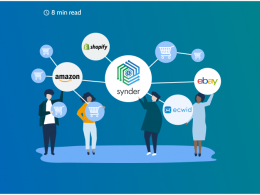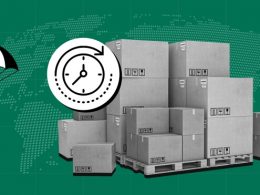How do you measure the wellbeing of your business? I bet that in most cases you’re looking at and analyzing your company’s financial statements – P&L, cash flow statement and balance sheet. And you’re right to do so, as P&L shows your company’s growth and profitability over time, the cash flow statement demonstrates liquidity, and the balance sheet gives you a snapshot of assets. You can understand if you’re succeeding or failing overall, but these broad statements don’t give you any details. What are your most profitable products? What are your largest costs? How do these scale as your company grows? How much are you actually spending to acquire customers? How much are you taking home in profits each time an item is purchased? Lots of business owners struggle to make sense of all those important details that make a huge difference.
This is what understanding unit economics can help you with! Today, with the help of our experts, we’re going to shed light on what unit economics are, how to track them, and how a better understanding of unit economics can help you take your business to the next level.
For simplicity’s sake, we’ll consider a retail business as an example and illustrate the intricacies of calculating the unit economics for a t-shirt at Alex’s T-Shirt Store. Ready? Let’s get started!
Contents:
1. What the heck is unit economics and why do you need to bother?
2. Calculating unit economics: Asking the right questions to understand the flow
3. Unit economics in apparel: Points of interest
4. Unit economics metrics with Synder Insights: Track unit economics right
What the heck is unit economics and why do you need to bother?
Unit economics are a method or model of running a business, when you’re analyzing your company’s revenues and costs in relation to one unit.
A unit here can refer to any quantifiable item that brings value to a business – an item, an order, a customer. A unit is analyzed in order to understand profit/loss on a smaller, more digestible scale.
Experts say:
There’s no right answer when it comes to defining unit economics. The way I usually describe it – a breakdown of your company’s profitability through the lens of a smaller unit. And a unit here is a specific item, customer, supplier, etc. You need to track unit economics so you understand exactly how the revenue you collect for each item you sell turns into profit.
The insights you get with the help of unit economics analysis are vital to your company’s long- and short-term planning as they allow you to calculate break-even points, predict profitability, measure efficiency, optimize the items you deliver to your customers and much more.
In order to calculate unit economics, you have to have a thorough understanding of what unit economics metrics you need to track. But there are some questions that need to be answered before you can do this.
How to calculate unit economics: Asking the right questions to understand the flow
There are two interrelated questions you should ask about your business: 1) Are you getting a good return on the customers you acquire? and 2) How profitable are each of your sales? Let’s walk through these questions.
1. Are you getting a good return on the customers you acquire?
Answering this question requires you to look at your customers – on average – and understand how much you’re paying to acquire them and how much profit they’re generating. This approach focuses on customer lifetime value (CLV) and customer acquisition cost (CAC).:
| Important Ratio = CLV / CAC |
CLV (or LTV) represents the average profit that a business generates throughout the entire relationship with a customer. Because CLV measures the lifetime profit of a customer, this metric is dependent not only on all the typical customer-focused metrics (retention, basket size, order frequency etc), but also on the profitability of each order.
Knowing how dependent ROI is on CLV, you try to dig deeper into the concept. To calculate CLV, you need the following formula:
| CLV = Revenue per Unit x Units per Customer x Customer Retention |
You acquire a customer and you want your CLV to be high so that your ROI can be better.
CAC is defined as the total investment required to acquire one customer, typically through sales and marketing.
In essence, you can think of a customer like a savings bond. Like a bond, every customer you acquire represents future cash payments in the form of purchasing goods from your store. You want to make sure these payments are worth it for the upfront amount you need to pay for the “bond”, which in this case is a customer.
Let’s look at Alex’s t-shirt store example, Alex paid $10 to put a flier advertising his shop under your door so that you could see it and decide to check it out. It worked! You buy one of his T-shirts. His acquisition cost to acquire you as a customer is $10. Ideally, you like it and become a returning customer. You just love his stuff! The more money you spend with Alex’s business, the higher your CLV.
It’s generally considered that a good ROI on a customer is 3x: that is, the average CLV should be 3x higher than the average CAC. So, if Alex paid $10 to acquire you, he’d want you to generate $30 in profits in return (notice this is profits not revenue – you may have spent $100 at Alex’s store, but the actual money he takes home is $30 – more on that later!).
At the same time, it might be useful to calculate the customer payback period (also known as ‘TROI’ – time to return the investment) – the time it takes to earn back the CAC. If Alex makes on average $2 for every order, and he spent $10 to acquire you, you need to order 5x for him to make up the CAC. On average it takes you 6 months to make those 5 orders, so his time to return the investment is 6 months. This simple analysis shows that in order to track unit economics, Alex first of all needs to keep tabs on such unit economics metrics as LTV and CAC.
Understanding the return you are getting for every dollar you spend on customer acquisition is important for any company in any industry.
The next thing you might want to pay attention to concerns the profitability of one unit.
2. How profitable is one unit?
Now you have to look at the units that you sell and take a ‘one item sold’ approach. Unit economics are determined by calculating the contribution margin, but through the lens of one unit. The margin gauges the amount of revenue from a sale minus the costs related to that sale. Basically, in order to calculate unit economics, you need to calculate everything you incur to produce, process and deliver an item to your customer and subtract it from the gross revenue. The formula looks like this:
| Contribution Margin = Revenue per Unit – Costs per Unit |
For example, Alex’s T-Shirt Store sells a specific brand of t-shirts for $100 each. If the costs to fulfill the t-shirt is $70, then the contribution margin is $30. Alex can further calculate the total contribution margin for a given period, let’s say a month. If he sells 100 t-shirts in a month, then the total price of t-shirts will be $10,000 (provided that there were no special offers or discounts). The total cost in this case will be $7,000, and the total contribution margin for that month will be $3,000.
Contribution margin represents the profitability of your business, and when you look at the contribution of one unit at a time, it can help understand the inner workings of your business.
The ‘one item sold’ approach works best for online shops and SaaS-businesses who define units as physical goods and paid subscriptions respectively. However, some B2C platforms who define an item as one order or one delivery might also find it useful.
While two approaches towards the way you calculate unit economics might seem contradictory and even mutually exclusive at first sight, they are in fact tied together. By improving the profitability of every order, you increase the long term value of every single one of your customers. This, in turn, improves the all important LTV/CAC ratio. Answering two simple questions lets you understand the flow – you have to look at your business from both customer and unit perspective.
Experts say:
While each approach to calculating unit economics has its pros and cons, they’re intertwined. Think of them as a kind of a lens that allows you to analyze different aspects. You’d probably want to use them both for your business. However, there are types of businesses where depending on how recurring your customers are you should focus on one vs. another.
If you’re a SaaS business selling software, you represent one end of the spectrum. LTV (CLV) and CAC are the two vital unit economics metrics you can’t live without – it’s all about repeat customers, retention, pricing and gross margin. Here you can focus more on customer unit economics.
But small businesses like a clothing store on the boardwalk in Disneyland are on the other end of the spectrum. Repeat customers aren’t that important – most often it’s just a one-time purchase for each person. As there’s no customer acquisition element, no LTV, one unit is more relevant in this case.
These are two ends of the spectrum and of course there are businesses in between. If you’re loyal to Macy’s, they want to make each order more profitable, but they also want to make sure that a customer keeps shopping at Macy’s and they don’t have to reacquire you every single time. That’s why you need both.
While these two approaches to calculating unit economics are often seen as two competing mindsets, in fact, they should flow together. First, understand the ROI concept of LTV/CAC ratio. You want to generate more money from every customer than the cost to acquire them. Then, understand that LTV = the profit of all the products purchased by a customer over their lifetime, which means not only do you need to focus on improving customer facing metrics (retention, frequency, basket size) but also improving the profitability of each item. This is the concept businesses should be tackling in a nutshell.
Unit economics in apparel: Points of interest
Alex is considering scaling his apparel business, but wants to make sure that he’s making enough profit and seeks professional help from unit economics experts. There are two important questions he might have:
- What aspects do I have to take into consideration if I want to calculate unit economics of my t-shirt? What should my business measure?
Experts say:
First and foremost, analyze your fixed and variable costs and focus on operating leverage. As you scale, you need to consider growth – another location or SKUs that you want to get into as you think they’ll allow you to get more revenue.
In terms of units, the most important thing is what will happen to your costs as you scale. I’m growing my business, I want to increase my sales, how can I use the fact that I’m 2x larger to also be more profitable? One area might be shipping – companies really try to crush logistics. I’m doubling my size, maybe I can negotiate a better deal with FedEx. Another area is equipment and machinery. I have an embroidery person and right now it costs me $15 per one unit. I’m going to bring that in-house and it will cost me a $10,000 machine, but $0 per one unit. I can justify that $10,000 machine, because it makes sense in light of the volume.
In terms of customers, consider if you can take advantage by scaling on a LTV/CAC ratio. Be it opening more store fronts (the customers will have more opportunities to become repeat customers) or offering more SKUs (if your existing customers like your brand, by expanding your merchandise to shorts and hoodies, for example, you can make them return again and again and you won’t have to reacquire them).
- What reports should I look at if I want to track unit economics?
Experts say:
On the unit side, pay attention to AOV (average order value), gross margin, and contribution margin. On the customer side, you’ll need to focus on leading indicators – LTV, ARPU, retention (percentage of returning customers), blended CAC (free, viral CAC when you didn’t spend any money on acquisition of new customers) and paid CAC (all the money that you’ve spent on advertising and marketing).
- How regularly should these unit economics metrics be tracked?
Experts say:
It depends on the rate of change of things going in the business and the rate of improvement you’re aiming for. If you’re focused on improving your unit economics every day, they should be monitored every day to understand how the initiatives you’re doing are improving. If there are a lot of changing costs (delivery people or suppliers are raising or lowering their prices) – the more frequent, the better). But if you’re moving slowly and everything is pretty stable, you can look at things on a weekly or monthly basis. Whenever you look at sales, you should look at unit economics. That’s the best policy to follow if you want to track unit economics.
Unit economics metrics with Synder Insights: Track unit economics right
Lots of companies disregard unit economics because they don’t think it’s necessary or just think it’s too complicated. The nightmare of getting all the items accurately tracked every single day in a way that allows to break it down even further to make actions out of it seems too much to handle.
Experts say:
Companies often overlook unit economics because sales and revenue are easier and sexier in most regards. There’s a general lack of attention and understanding of the second-layer metrics – the drivers of Unit Economics. It’s one thing to know what your profit per order is, but you need to understand why it’s that way and how you can make it better. Thankfully, it’s shifting.
The shift is made easy with the help of accounting tools providing instant reporting on vital KPIs – unit economics metrics. Synder Insights is an all-in-one accounting solution that offers a set of instantly generated actionable reports based on data that the system captures from connected e-commerce platforms and payment gateways, such as sales, customers, products, payment processing fees, etc. Every insight comes from your own financial data, is gathered from the platforms you trust and presented in granular reports which allow you to take guesswork out of the decision making process. Synder makes understanding unit economics easier and faster.
Experts say:
Synder Insights allows businesses to understand what the impact would be of turning a variable cost into a fixed one (if you do it, unit economics will increase 5-10% – it may be worth your while). The tool answers two important questions: 1) What costs do we need to attack and optimize? 2) What is the relation of those costs relative to our growth?
With Synder Insights, measuring, scaling and growing your business is backed by a number of granular KPI reports – LTV, AOV, purchase frequency, top performing customers, top performing products, just to name a few (Check out the full list of available reports). The analysis of unit economics metrics becomes a matter of looking at reports – no need to gather data yourself! And the most important thing – you can calculate unit economics taking both customer and item approaches.
Experts say:
The reports are of great help when it comes to orchestrating your strategy. Find out what your top performing products are and highlight them on your website or bundle them with other products and see your sales grow. Understanding what people are buying and how profitable these items are will not only help you make decisions about how to market them, but also bolster the way you allocate your time in terms of making the items more profitable. And that’s just one example.
Getting the data is hard and understanding the data is even harder. Understanding the costs is impossible without granular data and the necessary level of granularity is extremely tough to reach. The company that is able to unlock it in terms of visibility and actionability is going to be really powerful.
Understanding unit economics might seem daunting at first because of the level of detail and relative novelty of the concept. But exploring lots of indicators and combining them to see the whole picture shouldn’t be a bad experience. With the right kind of help you can nail unit economics.
Ready to take your business to the next level with actionable insights for unit economics? Schedule a demo with our specialists to check out Synder Insights and other hot features we have to offer.
Wrapping up
Financial performance matters to any business, irrespective of size and maturity. Understanding unit economics provides a fresh perspective on the revenue and costs balance and proves that steering a business toward consistent growth is possible. It helps reveal gaps that curb profitability, forge effective strategies, analyze their execution and optimize costs. Even if it’s the unit economics of a t-shirt.

.png)




